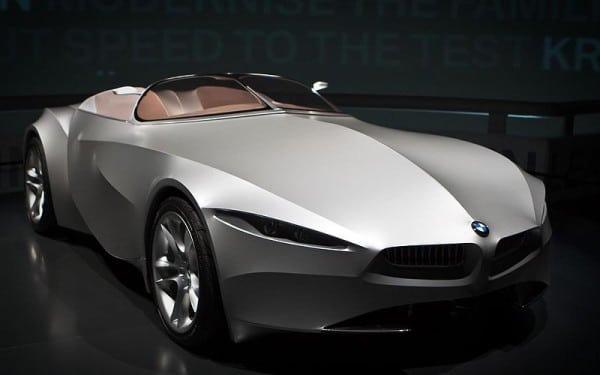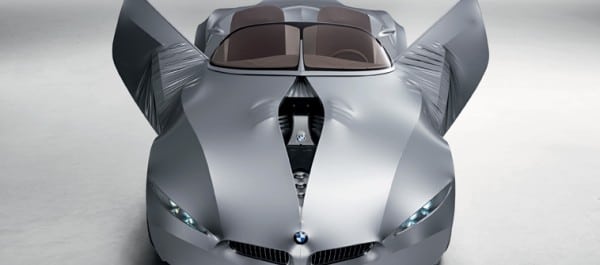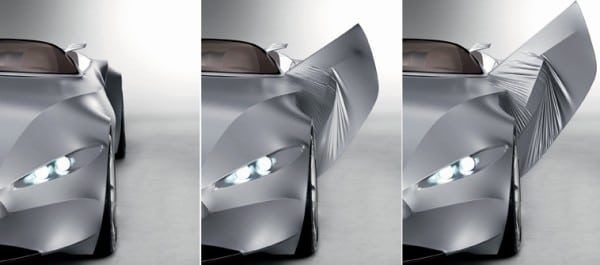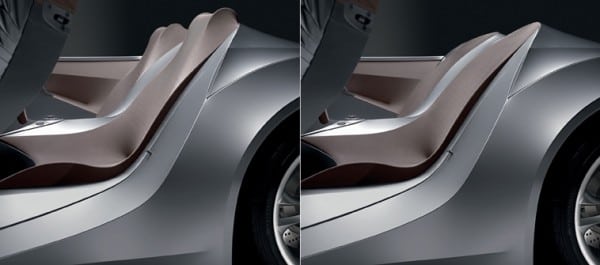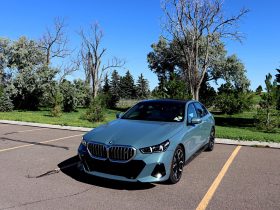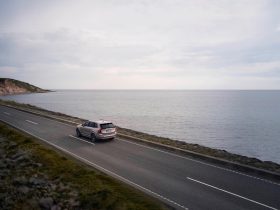Every week, we sit down for a brew and look at a concept car that changed the industry or the way we think about cars. This week, we’re not going too far back to look at one of the most innovative form and function concepts ever introduced: the BMW GINA Light Visionary Model.
The Geometry and functions In ‘N’ Adaptaction (GINA) concept was designed by BMW’s head of design, Christopher Bangle, and construction began in 2001. The car is a current concept still shown in Beamer’s design museum here in the United States.
Fabric Body
The GINA Light Visionary Model is unique in two ways: it’s a total rethink of auto body work and a redesign of how we imagine form and function in an automobile. The concept’s primary attribute is its fabric skin, which allows it to change shape easily and opened up a host of possibilities for the design team.
The body fabric is a flexible, stretchable and water-resistant, translucent man-made polyurethane-coated spandex that is both pliable and durable. It resists temperature extremes and doesn’t swell or shrink with them. Movement (loosening) of the skin’s stretch does not slacken it, so the car’s body changes shape smoothly.
This gives a lot of interesting possibilities for the underlying structure.
The BMW GINA’s Structure
The frame underlying the fabric skin is made up of a combination steel, flexible carbon struts, and aluminum wire. This is all controlled through the driver’s console and by sensors and computers within the car. A combination of hydraulic and electric actuators make the physical changes required, such as the “hood” opening (above) and doors opening and closing.
Of course, the BMW GINA does not have a crash frame or other legal requirements for road use, being a concept only, but the ideas it creates can be incorporated into future vehicle design.
Shape-Changing Awesomeness
Obviously, the most eye-catching part of the GINA’s design is its ability to shape shift. Not only are the doors nearly seamless with the car when closed, but they “flex” to open rather than swinging out on a hinge as we would normally expect. This small change heralds a lot of other subtle flexibilities the GINA offers.
The headlamps “blink” like an eye, closing when not in use, opening slightly on low beam and opening wider when high beams are on. The hood, as seen above, parts to allow access to the engine and can be stretched open to nearly the edges of the fenders. Fenders, too, can be stretched for a more muscular look or to control wind over the canopy.
At the rear, the deck lid can shape shift to match the vehicle’s speed and aerodynamic needs, lifting a spoiler to various heights according to need. The taillights are underneath the semi-translucent skin, shining through when on.
Inside the GINA, seating also molds to the driver and passenger. When no one is in the car, the seats take on a flat, plastique shape, but when activated by touch as someone enters, they mold themselves to fit. To go along with that, the steering wheel and instruments have an “idle” position far forward of the driver when not in use. When the driver sits in the seat or activates them manually, they move forward and upwards to a proper viewing angle and for easy access to control the car. This makes it easier to get in and out of the car and moves the controls out of the way when the car is parked.
Videos
BMW produced a short series of video clips to showcase the BMW GINA Light Visionary Model and its attributes. You can see those below followed by a photo gallery of the car.
http://www.youtube.com/watch?v=kTYiEkQYhWY
http://www.youtube.com/watch?v=EP6wOrdtxvY
http://www.youtube.com/watch?v=5nY8tg_KSAQ




